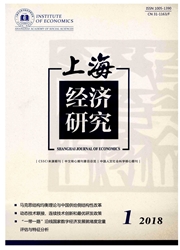

 中文摘要:
中文摘要:
该文利用中国271个地级市1994-2014年的面板数据,采用PSM-DID方法对东北振兴战略的政策效果进行检验,重点分析东北振兴政策的短期刺激与长期失衡效应。结果表明:首先,东北振兴政策的实施显著地增加了东北地区经济总量,短期刺激效应明显;其次,东北振兴政策的实施并没有显著增强东北地区的全要素生产率;最后,东北振兴政策的实施显著恶化了东北地区的产业结构,长期失衡效应明显。
 英文摘要:
英文摘要:
With the panel data of 1994--2014 in 271 prefecture--level cities in China, the paper tests strategies of revitalizing northeast China by PSM--DID and analyzes Short- term stimulus and Long--term imbalances effect. The results show, firstly, the implementation of strategies of revitalizing northeast China enlarges the regional economic gross and short--term simulative effect of them is obvious. Secondly, the implementation of the strategies doesn't significantly enhance the local total factor productivity in northeast China. Thirdly, local industrial structure has not been improved obviously.
 同期刊论文项目
同期刊论文项目
 同项目期刊论文
同项目期刊论文
 期刊信息
期刊信息
